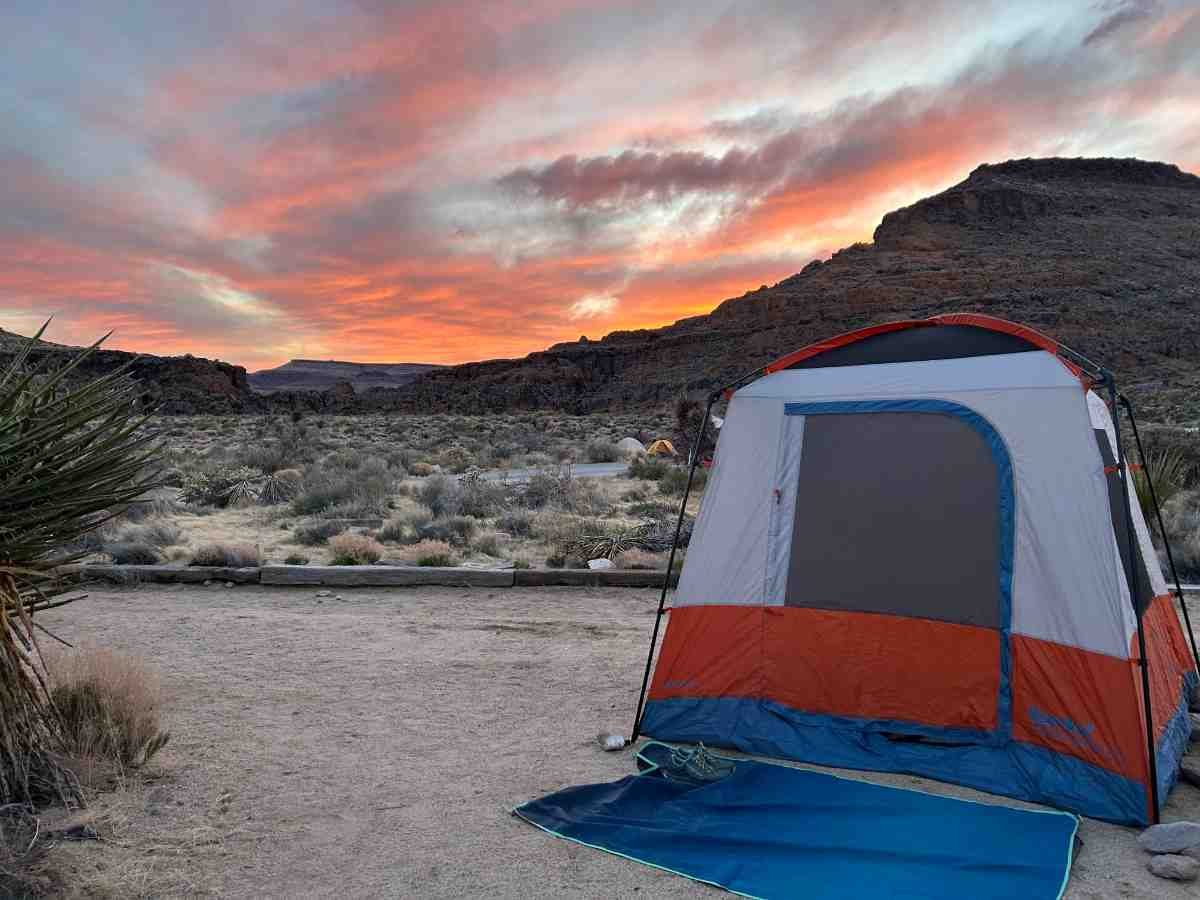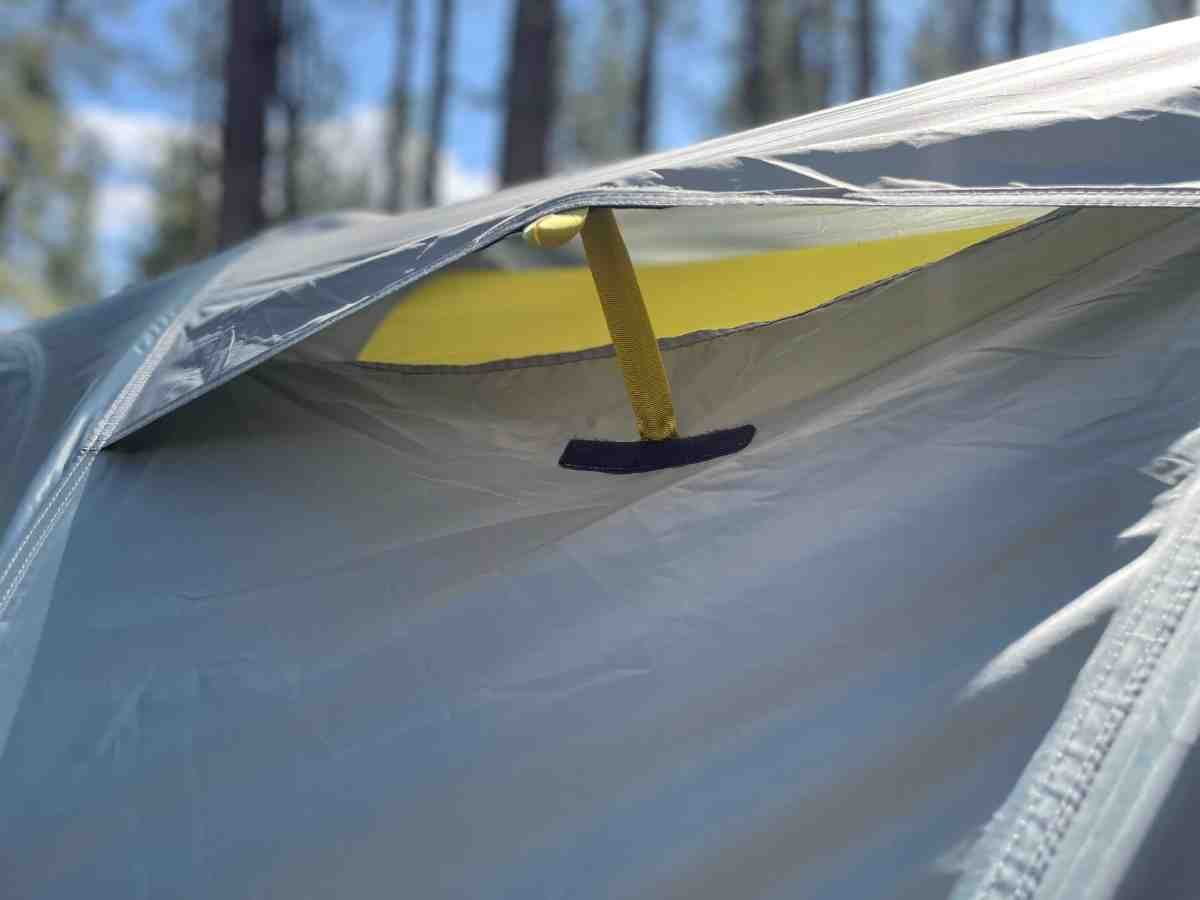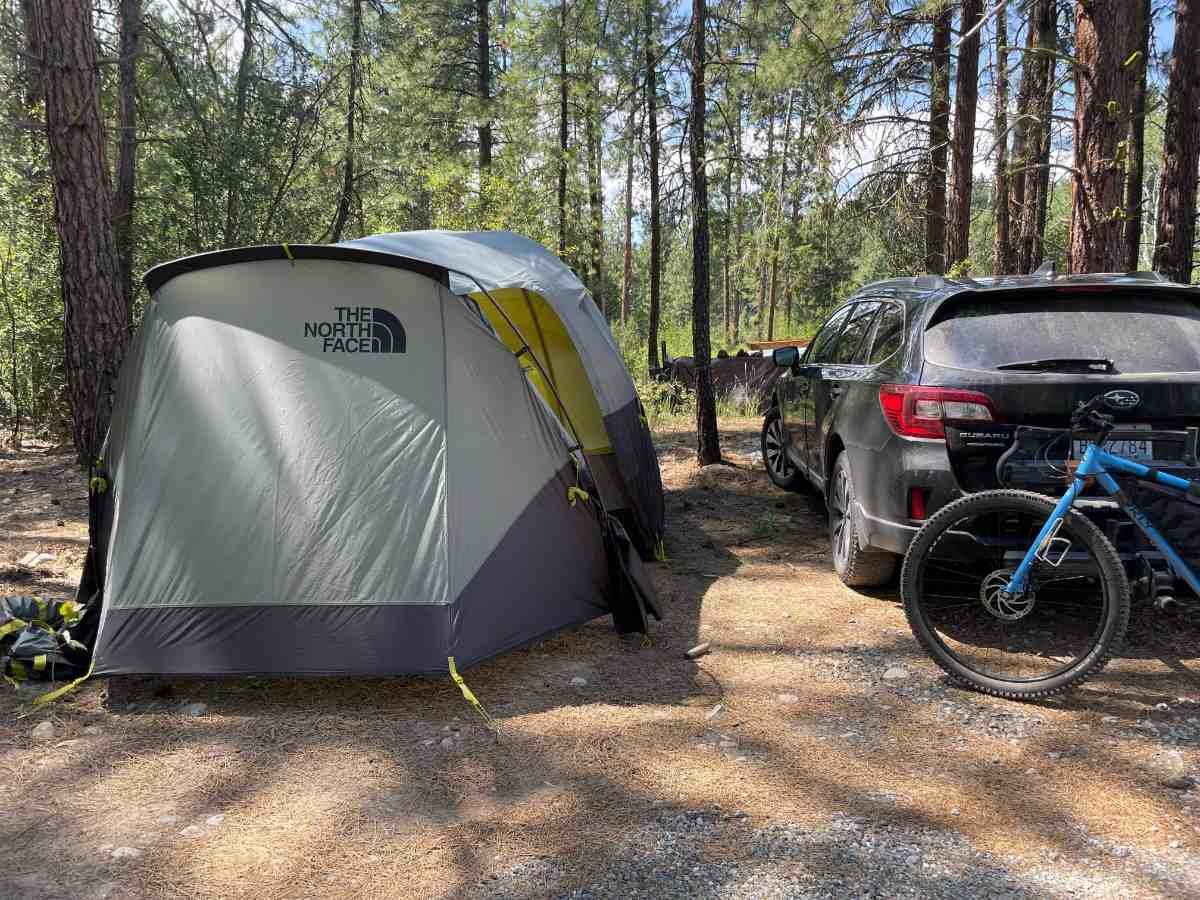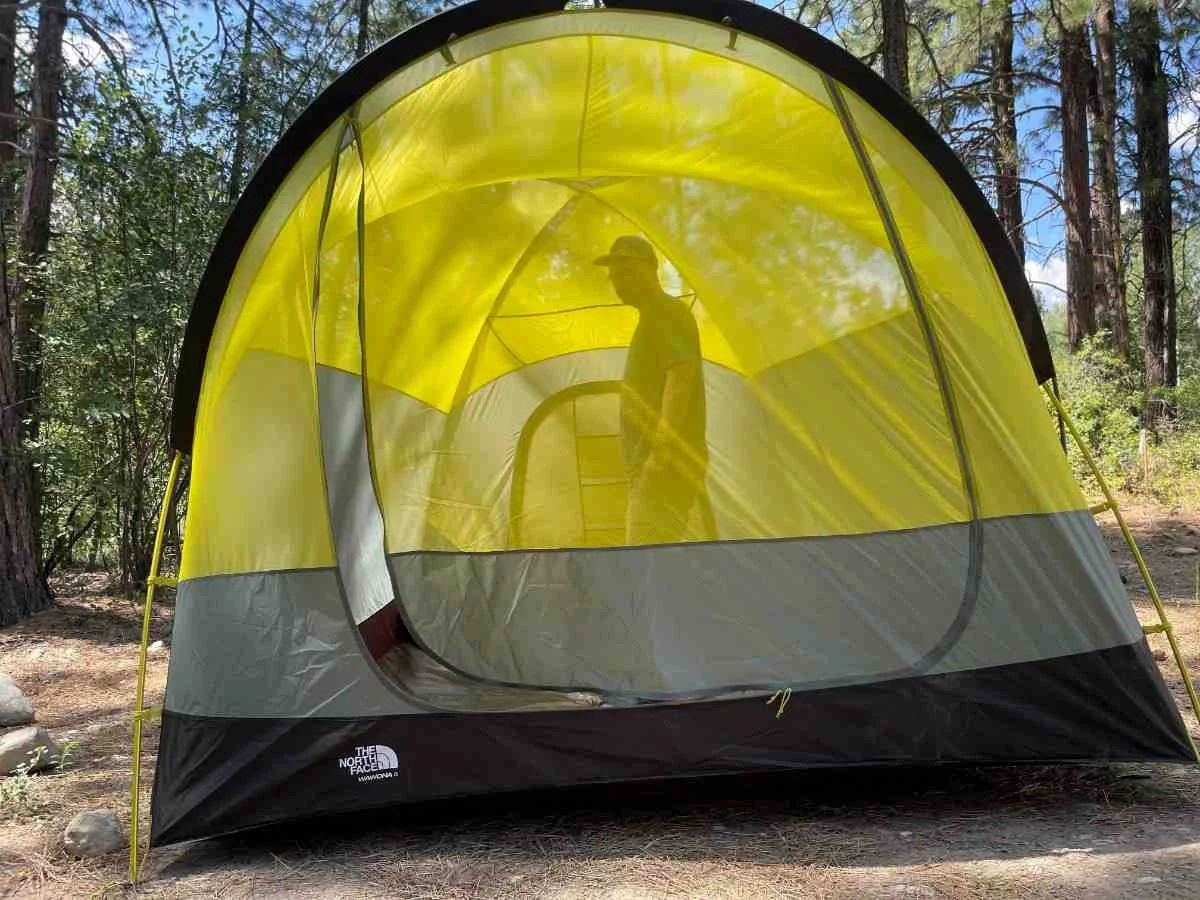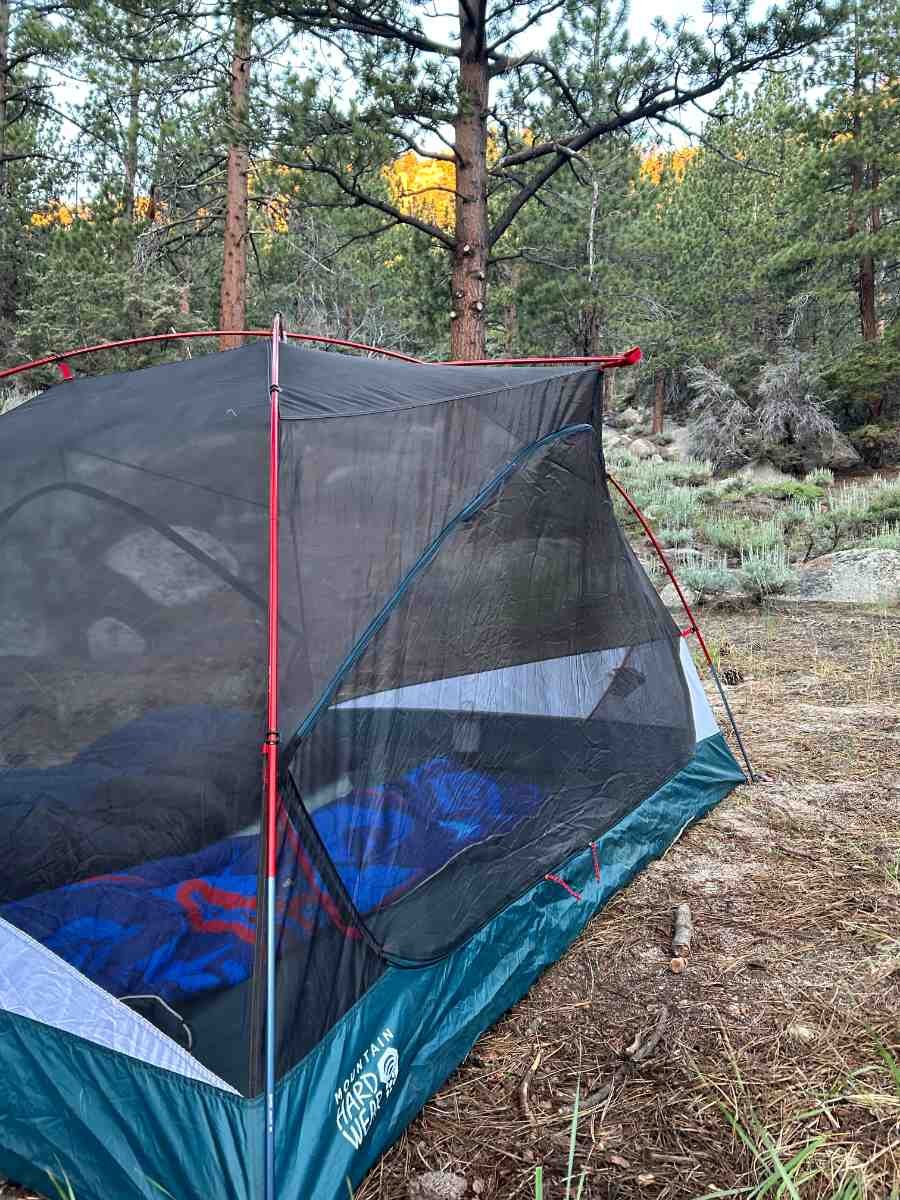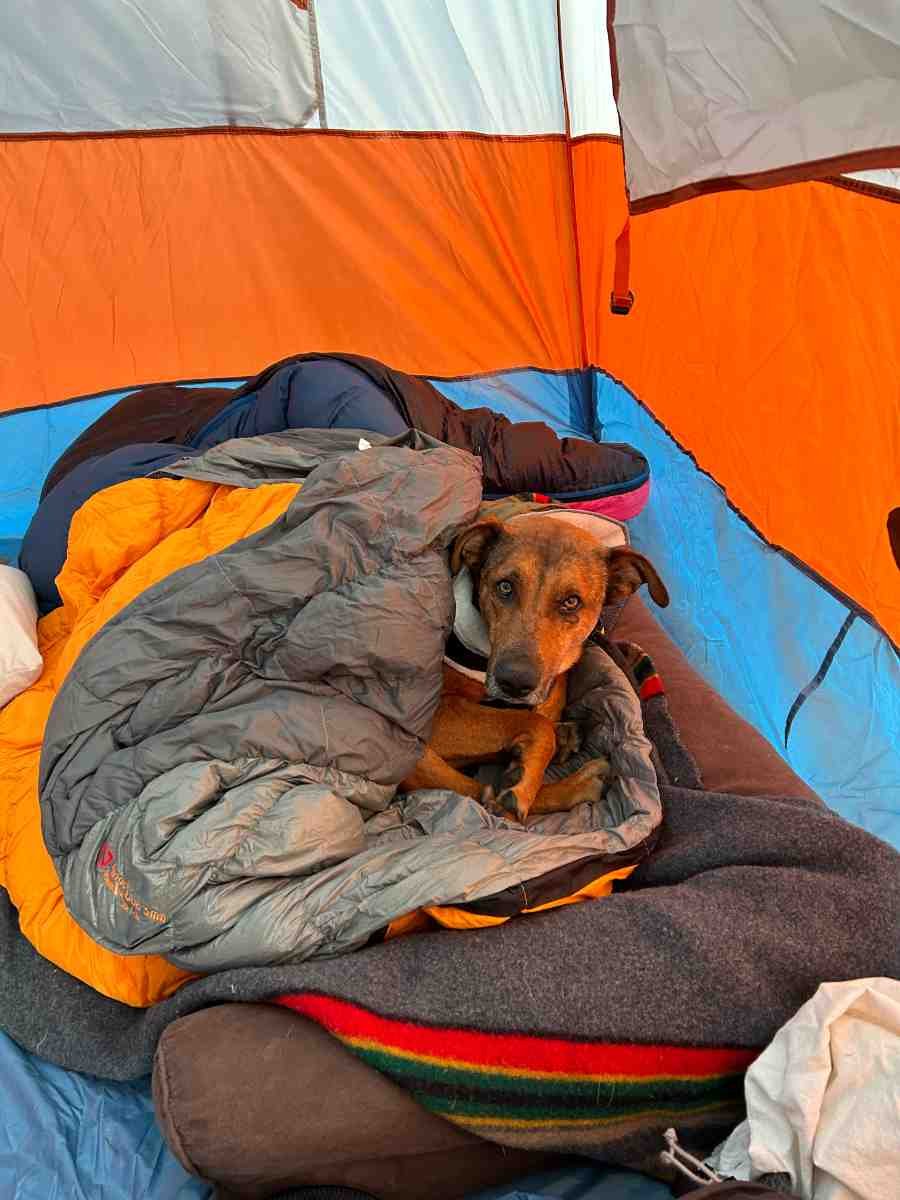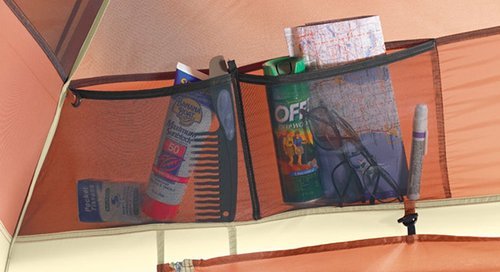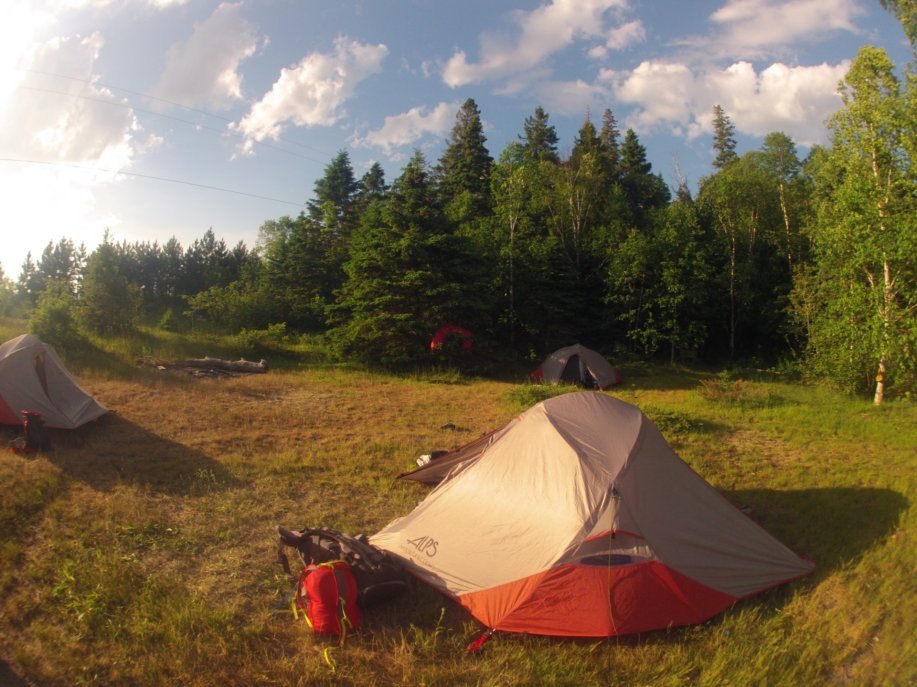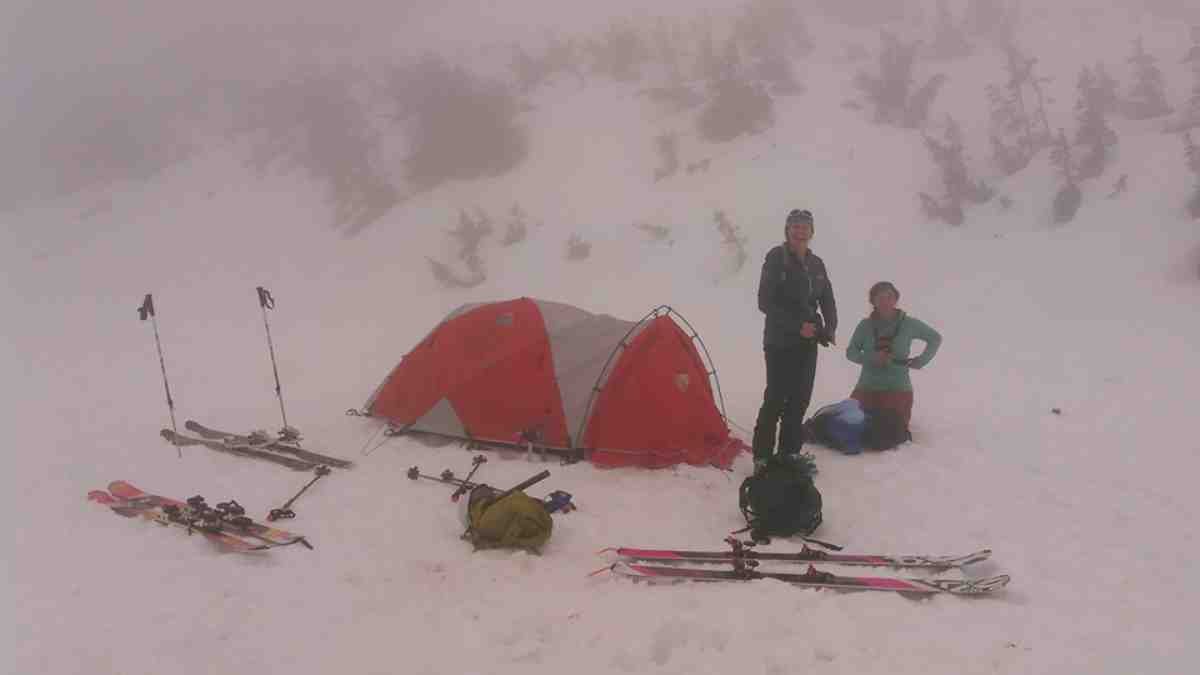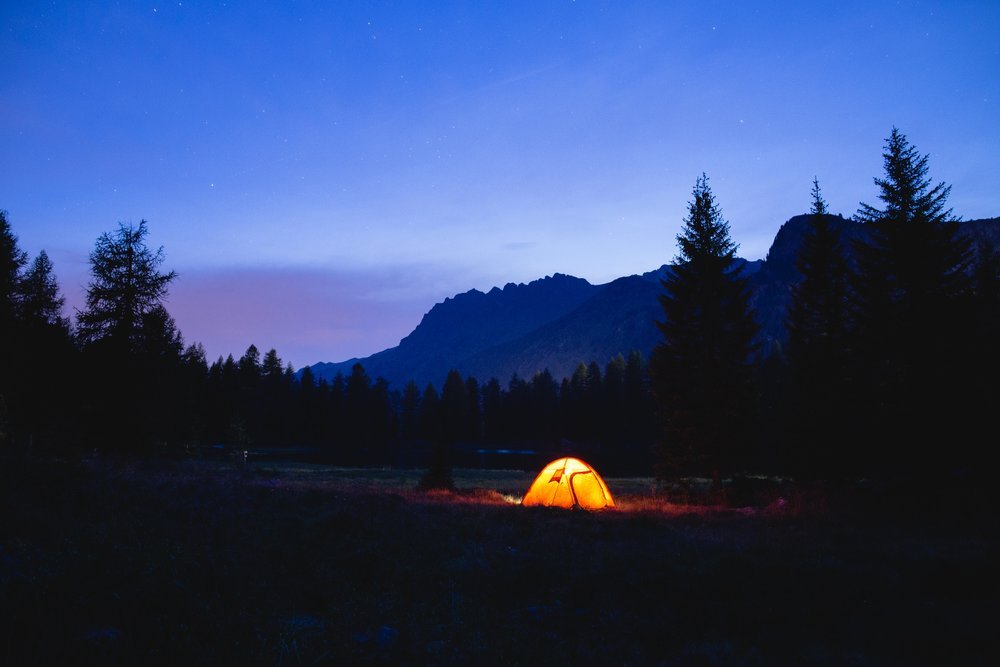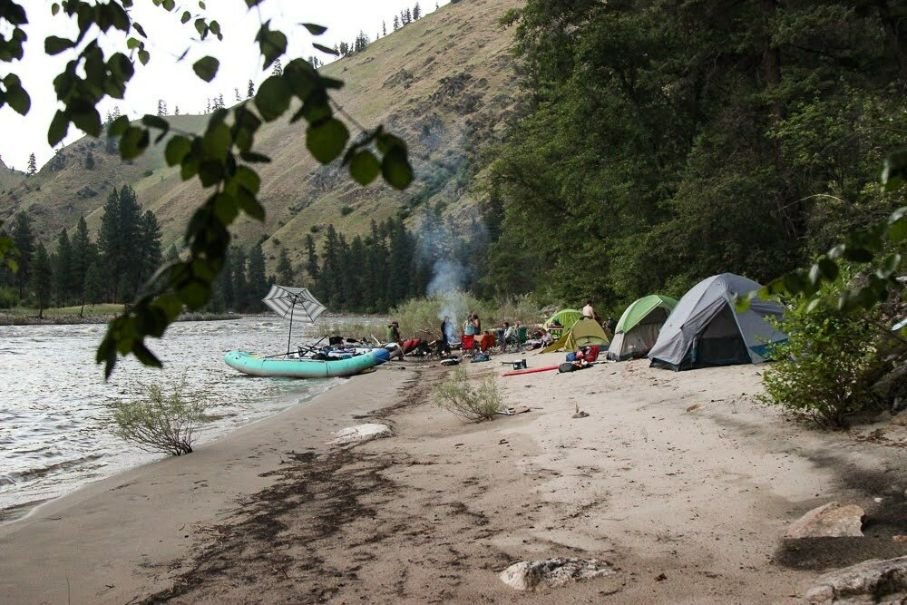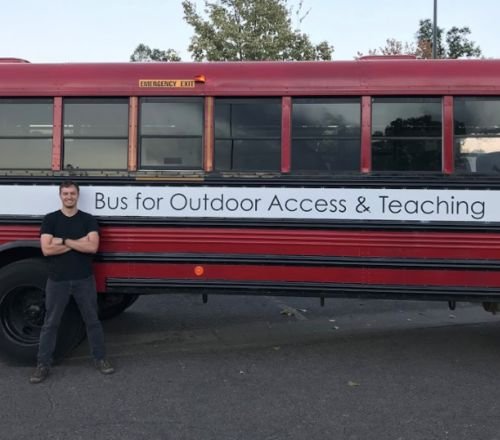Best Camping Tents of 2023
Durable, High-Quality, WeatherProof Car Camping Tents
August 2nd, 2023
The Eureka Copper Canyon camping tent at a campground in the Mojave Desert.
After a decade of testing different camping tents while working at an outdoor education camp, we found the best camping tents that are easy to set up and durable enough for repeated use by teenagers.
To research, we read dozens of review sites and hundreds of customer reviews. The right family camping tent is critical to getting a good night of sleep, weathering a storm, or having the right place to play cards and eat a meal. One of the best ways to move from "surviving" to "thriving" in nature is a well-ventilated, durable 4-person tent (or 6-person tent) to sleep in.
We researched and tested to find the best family tent that’s waterproof, windproof, and easy and quick to set up.
We create reader-supported, objective gear reviews independently selected by our editors. This story may contain affiliate links, which help fund our website. When you click on the links to purchase gear, we may get a commission — without costing you an extra cent. Thank you for supporting our work and mission of outdoor coverage for every body! Learn more.
Comparison Table
| CAMPING TENT | TREELINE AWARD | # OF PEOPLE | FLOOR SPACE | DOORS/ VESTIBULTES | VESTIBULE SPACE | FREESTANDING? | PEAK HEIGHT |
|---|---|---|---|---|---|---|---|
| The North Face Wawona 6 | Best Overall Read why |
6 | 86.11 SF | 1/1 | 44.7 SF | Y | 76" |
| Mountain Hardwear Mineral King 3 | Most Versatile Read why |
3 | 42.5 SF | 2/2 | 20.9 SF | Y | 48" |
| REI Co-op Wonderland 6 | Best Family Read why |
4, 6 | 83.3 SF | 2/0 | n/a | Y | 78" |
| Eureka Copper Canyon LX 4 | Best Budget Read why |
2, 4, 6, 8, 12 | 64 SF | 1/0 | n/a | Y | 84" |
| ALPS Mountaineering Lynx | Best Backpacking Hybrid Read why |
1, 2, 3, 4 | 64 SF | 1/1 | 25 SF | Y | 52" |
| Coleman Sundome | Best Backyard Read why |
2, 3, 4, 6 | 100 SF | 1/0 | n/a | Y | 72" |
| Mountain Hardwear Trango 2 | Best Winter Camping Read why |
2,3,4 | 40 SF | 1/1 | 16 SF | Y | 50" |
Going camping? See our story on the The Best Camp Chairs and The Best Headlamps.
Looking for other tents? See The Best 4-Season Tents or The Best Backpacking Tents or Best Bikepacking Tents
The Best Camping Tents
Best overall camping tent: The North Face Wawona
Number of people: 6 (also available in 4-person model)
Floor space: 86.11 square feet
Vestibule space: 44.7 square feet
Height: 76 inches
Doors: 1 on tent body
What we liked: generous usable space, features, stability, durability, pockets
What we didn't like: instructions for set-up could be more helpful, rainfly doesn't extend over back of tent
If space and features are what you’re looking for in a camping tent, then The North Face Wawona is here to be your home away from home. No tent in our test matched the functional spaciousness of this tent, with its ample floor space and massive vestibule. If you pack heavy or travel with the whole family in tow, this tent is the ideal companion to offer all the space and features you could dream of while at camp, without sacrificing stability or durability in the tent construction.
The floor space of the Wawona 6 is a whopping 86 square feet. Steep walls peak at over 6 feet tall, leaving plenty of space to stand and move around the tent. The spacious vestibule is about half the size of the tent itself, leaving room for gear, bikes, or even space to sit when the weather rolls in.
COMPARE PRICES OF THE THE NORTH FACE WAWONA
The North Face Wawona tent fits a table, four camp chairs, and a bike in the vestibule with room to spare.
On one camping trip, Treeline founder Naomi Hudetz was able to fit a table, four camp chairs, and a bike in the vestibule with room to spare. The tent has one door on the main body of the tent and the vestibule has doors on both sides. On the rear of the tent body there is a large zippered window plus many other venting points that work well on hot days at camp.
The windows are vented and the design is set up with thoughtful features to keep you comfortable and dry.
To top off the feature set, the Wawona is loaded with stash pockets in the interior of the tent. They’re on the walls and ceiling with plenty of space to maximize storage and organization. It also has hooks along the top to hang a lantern or other items.
The Wawona Tent is tall and generous, giving you more room than a car.
When it comes to setup, the instructions provided by The North Face are a bit less than helpful, but once you’ve figured it out setup is simple. The poles, sleeves, and grommets are all color coded (which TNF did not mention in the instructions), so once you understand that the setup is much less confusing.
The stakes are sturdy on The North Face Wawona, even for a tent this large and tall.
The tent stakes out well and has a sturdy structure, even for such a large and tall tent. On a camping trip in the notoriously windy Columbia River Gorge, the tent held up well against consistent big gusts. (The tent has additional guy lines to further stake out the tent if needed.)
A 6-foot person can. easily stand up in The North Face Wawona Tent.
One downside to the tent’s construction is the coverage of the rainfly (and this is a common complaint with many large car camping tents). The rainfly does not completely cover the body of the tent, leaving the potential for precipitation to get it. Specifically, the rain fly does not fully extend over the back of the tent. While we haven’t had a chance yet to test this tent in heavy rain, this is the one area where we have reservations about its performance.
We took The North Face Wawona to a music festival and it felt right at home on the grass as it does in the forest.
Overall, the Wawona is made with sturdy, durable materials and it’s clearly built to last many seasons of camping. If you frequent the campground and space and features are your top priorities in a tent, then this one should be at the top of your list.
Most Versatile camping tent:
Mountain Hardwear Mineral King 3
Number of people: 3 (also available in 2-person version)
Floor space: 42.5 square feet
Vestibule space: 20.9 square feet
Height: 48 inches
Doors: 2, plus 2 vestibules
What we like: easy set-up, full coverage in rain, weather-proofness, stargazing mesh, ventilation, stability, packs smaller than other car camping tents, light enough that you could backpack with it
What we didn't like: can't stand up in it, too small to put camping chairs or tables inside
The Mountain Hardwear Mineral King is an ideal tent for campers seeking versatility in their gear. While this tent doesn’t boast the livable space of others in our test, it’s a very comfortable, functional, stable, and weatherproof tent that can be used in a variety of places and situations. We loved this tent for its airy mesh tent body and stargazing potential, plus the fact that it packs much smaller than most other car camping tents.
COMPARE PRICES OF THE MOUNTAIN HARDWEAR MINERAL KING 3
The Mountain Hardwear Mineral King 3 has easy-to-set-up poles, lots of mesh for ventilation, and well-tensioned walls to reduce sag.
The Mineral King tent is a double-walled tent with snaps instead of sleeves on the tent body. We prefer this design for a couple reasons. The first is that it’s overall easier to set up. The second is that this design allows the rain fly to sit further away from the tent body, mitigating any condensation from getting inside the tent. It has two large doors on either side of the tent that are easy to zip and easy to get in and out of, and each side has its own vestibule when the rain fly is on.
Treeline editor Liz Thomas was able to fit a whole beach towel spread out in the vestibule for relaxing at camp when testing. There are 5 mesh pockets in the tent’s interior for stashing essentials like sunglasses and hanging a camping lantern.
The Mineral King tent has a vestibule generous enough to use as a porch. This was our camping set-up for fly fishing in Montana.
The Mineral King tent is intuitive and easy to set up. We had both well-experienced backpackers and brand new campers use this tent, and didn’t have any issues with the setup. When testing, Liz found that the curved tent poles helped make this a cinch, with the poles easily slipping into the grommets.
The tent body of the Mineral King is almost entirely mesh, and is amazing for both venting and star gazing. The rain fly even has the option to roll up halfway to check out the Milky Way in the eastern Sierra without worrying about a storm suddenly rolling in.
This is our Mountain Hardwear Mineral King set up for a week of camping at a campsite in the Eastern Sierra.
When it comes to weather protection, this is one of the best of the 3 season tents that we tested. Unlike many large car camping tents (budget ones especially), this rain fly covers the entire tent body. Liz tested the tent for a week-long fly fishing trip in Idaho and Montana in some significant rain and the tent did a great job of keeping her dry. Each vestibule door has a peak at the center that does a great job of channeling rain and condensation right off the fly.
The beaked dome supports the rain fly and directs water off the tent in rainy conditions. In dry conditions, it adds extra headroom and reduces droop.
The dome design of this tent does mean that there’s not room to stand up fully, though there’s plenty of headspace when sitting up. But the advantage to this tent design is that it’s sturdier overall in inclement weather. Even in strong wind and rain, this tent was right at home and had no problems keeping the weather out. This tent is well made and we did not have any durability issues when testing. It’s a great piece of gear that should last seasons of use.
Abundant mesh means the Mountain Hardwear Mineral 3 King has the best views of any camping tent we used.
The Mineral King comes packed in a durable stuff sack and it packs smaller and weighs much less than many other tents in this test, which is part of what makes it so versatile. Its packed weight is just over 7 pounds, though you can shave a pound for a 6 pound trail weight. While this is definitely a car camping tent, it’s light and small enough that you could backpack with it if you really wanted to. If you backpack often we’d recommend a lighter and smaller tent, but we think this could be a great option for someone who loves to car camp and might want to get a small taste of backpacking without having to have a separate tent.
Best family camping tent:
REI Wonderland
Number of people: 6
Floor space: 83.3 square feet
Vestibule space: No vestibule, two awnings above doors
Height: 78 inches
Doors: 2
What we liked: design makes spacing out sleeping arrangements easier, room divider, interior roof zippers fo easier access to attach clips to poles, large doors to move in camp furniture, lots of storage pockets, value for the price
What we didn't like: fits 6 people tightly, not built for harsh weather
If you’re looking for an even more family-friendly option than The North Face Wawona, look no further. The REI Wonderland 6 is compared to a royal palace for a reason. Its Quonset hut-esque design makes spacing out sleeping arrangements much easier: You can sleep six people down the line, or break it up into three-and-three, with each group facing one of the two doors. (Note: This doesn’t leave much room for comfort, but technically, yes, you can sleep six adults in this tent.) The biggest bonus of all? The room divider. If the parents don’t want to be a part of the pillow fight, just pull up the curtains and now you have a two-room haven. There are multiple loop options to attach these dividers, too, if you want a spacious back bedroom and smaller hangout area (think ⅔ and ⅓) or just a half door for changing privacy.
VIEW THE REI WONDERLAND
The REI Wonderland 6 is a multi-roomed tent for a big group or family.
Other features help this family tent stand out: interior roof zippers give you easier access to attaching clips to poles from the interior, rather than struggling on the exterior. The doors are massive, unzipping nearly all the way around for maximum easy access. That means moving bags, air mattresses, cots, tables, chairs, the dog, or your portable espresso machine just got easier. Last but certainly not least, the Wonderland 6 sports a whopping 22 storage pockets to hold just about everything (except the dog).
Like other tents similar in shape and size, this tent isn’t exactly built for harsh weather and when the wind rips it does struggle a little. We think the Wawona tent from The North Face fared better in bad weather (strong winds), thanks to its extra guy lines to stake the tent out. The Wonderland does have much better coverage with the rain fly than the Eureka Copper Canyon. The only other downside to this tent is the price. It’s a bit more than the Wawona, and nearly double the price of the Copper Canyon. However, if the features this tent offers are a priority for you, then this tent is an excellent choice.
Best budget camping tent:
Eureka Copper Canyon
Number of people: 4
Floor space: 64 square feet
Doors: 1
Peak Height: 7 ft
What we liked: value for price, can stand up, easy to set up even for beginners
What we didn't like: no vestibule space, not as weatherproof as other tents
With its Copper Canyon series, Eureka has developed an affordable, quality family camping tent for mild conditions. It's a great budget choice for summer camping and a warm part of the spring or fall.
The Eureka Copper Canyon tent is easy and intuitive to set up—easier than the more expensive Wawona. It’s very spacious with plenty of floor space, but it lacks the vestibule space that other tents have. (It has no vestibule at all).
The pros of the Copper Canyon are simple: it's massive, easy to set up, and affordable. But most importantly, it is about as close to an " instant cabin tent" as we've seen. It sets up fairly quickly for a cabin-style tent — 10 minutes according to most reviewers. In comparison, you can expect as much as 15 to 20 minutes for other comparable large tents. We had camping beginners set it up in the dark while camping near hot springs in the Eastern Sierra and they had no issues.
It comes in 4, 6, 8, and 12 person tents. We reviewed the 4 and the 12 person versions.
COMPARE PRICES OF THE EUREKA COPPER CANYON LX 4
The Copper Canyon tent at a campground in the Mojave Desert National Preserve.
The Copper Canyon is a standard cabin tent: comfortable and large enough for “3 children...[to] walk (well, run) around inside the tent” according to reviewers on Busted Wallet. It’s also affordable. It’s hard to find a quality cheaper tent (there’s one — read on). This is the real perk of the Copper Canyon. As Mountains For Everybody put it on their review, “the price and quality combination you have here is hard to match.” While you can find similarly designed cabin tents, almost all of them will cost more or have a less reliable warranty.
The Copper Canyon tent has a great mesh roof for stargazing. A camping lantern can be attached to the hook at the top to use as a light.
One of the things we liked the most about the Copper Canyon is that it has plenty of gear storage pockets. They're located higher up from the floor than its competitors, meaning the pockets are accessible for cot users. There's even a hanging mesh storage pocket in the middle of the tent. As with the Boondocker, Eureka also offers an optional add-on gear loft that attaches to the sides of the tent for even more storage.
Treeline Review editor Naomi Hudetz tested this tent on a trip near Mount Saint Helens in a damp, heavily-forested area. There was no rain, but the tent did not have any issues with condensation. Treeline Review editor Liz Thomas tested this while camping on the California Coast near Point Mugu and also didn't have condensation issues.
We camped on the California Coast with a dog. It survived little paws and claws.
However, the rain fly on this tent covers the top buut not cover much of the tent body.
It's survived desert wind while camping in the Mojave Desert National Monument. For trips where inclement weather is likely, there are tents with much better weather protection. But, this tent offers great value compared to others that are a similar size and capacity.
Particularly impressive, Eureka has solved an age-old problem of tangled guylines on the rain fly by building in a small pocket for each line, so they don’t get tangled during set up.
The Copper Canyon is well-loved by other professional reviewers, too. Wirecutter called this tent “the best car camping tent for most families.” BustedWallet gave it an 8.8/10, and Mountains for Everybody an 8.4/10.
The Eureka Copper Canyon has generous low storage pockets, which are helpful for for floor sleepers to access items like headlamps, glasses, and midnight chocolate bars.
The cons of the Copper Canyon are worth noting before you buy: the price comes at the expense of materials. This is not a wilderness tent or one designed for bad weather.
You’ll want to be gentle when packing, unpacking, and setting up poles. While we had no durability issues with the tent—even when camping with dogs—the carry sack wasn’t quite as durable as the tent itself.
Though it’s fairly durable once set up, you wouldn’t want to weather an extreme storm in it. It’s a fair-weather tent that needs to be treated with some gentleness.
The ALPS Mountaineering tent on a spring backpacking trip in the deciduous forest of Ohio. Photo courtesy Treeline Review reader Bobbi Walters.
BEST HYBRID CAMPING/BACKPACKING TENT:
ALPS MOUNTAINEERING LYNX
Number of people: 4
Floor space: 64 square feet
Vestibule space: 25 square feet
What we liked: lightweight, durable, affordable
What we didn't like: snugger than other car camping tents
One of the big challenges with camping tents — especially the others we recommend — is that they are just camping tents. Many camping tents are too big and heavy to be easily carried in a backpack. That’s where the ALPS Mountaineering Lynx 4-person tent comes in to solve that problem as the best camping tent that is also a backpacking tent. While it isn't a large tent, the Lynx is a lightweight tent that is durable and affordable. The value of its versatility and lower price cannot be overstated.
COMPARE PRICES OF THE ALPS MOUNTAINEERING LYNX 4-PERSON TENT
The ALPS Mountaineering Lynx is an affordable 4-person camping tent that can also be used for backpacking. Here, kids use the Alps as part of an outdoor program run by the author. Photo courtesy Micah Leinbach
This 4-person tent is one of the most affordable tents we looked at, period. It offers campers a generous amount of vestibule space. It's a time-tested tent that multiple online reviewers said had lasted them years. Backpacker.com says it is “as roomy, easy to set up, and durable as the ones made at the beginning of this decade.”
As a brand, ALPS Mountaineering has consistently produced affordable, reliable backpacking gear. Their tents have been a staple of some of my programs, and stand up to the “teenager test,” rarely breaking despite repeated use by novice 13-year olds. The Lynx is made in this tradition.
As a backpacking tent, the Lynx is snugger than other family camping tents, but still large enough for one reviewer to put a full-size foam mattress, pillow, and tote of clothes into it. Campers can store extra gear in the vestibule space.
The author uses the ALPS Mountaineering tents on a educational programs to teach kids and teenagers camping and backpacking skills. Photo courtesy Micah Leinbach.
It’s not as light as other backpacking tents, but it’s light enough to carry, especially when split between four people. This balance is what makes the Lynx a great deal.
Backpackers.com compares it to the Copper Canyon, which we also recommend, but says it is better for backpacking. They say, "it’s not a sprawling four-person area, but can fit four adults if necessary. Three is more comfortable. If any of the people are children, you’ll be fine."
There aren’t any major cons other than weight — and it’s still the lightest camping tent we considered. It comes with a Limited Lifetime Warranty. Affordable, easy to set up, and capable of handling the weather or trails, the Lynx is a great option for a small family that wants to keep the door open to camping further from the car than the Copper Canyon allows.
Camping in the redwood forest with the Coleman Sundome and camping chairs and a robust firepit.
BEST Backyard camping TENT:
Coleman Sundome
Number of people: 6
Floor space: 100 square feet
Vestibule space: No vestibule
What we liked: gets the job done at an affordable price, headroom, can fit camp furniture
What we didn't like: weatherproofness, durability
Inevitably, tent purchasers will discover the Coleman Sundome, and for good reason. A Coleman tent is a staple of budget camping. While not the highest quality tents on the market, not everyone needs a four-season mountaineering tent. Coleman tents cover a range of low-budget options for your extended family to the always-reliable once-a-year family camping trip. After decades of reliability through summer road trips and weekends in the woods, Coleman has proven its place on this list. Although there are several models of Coleman tents, the Sundome is the best Coleman tent we've found. It comes in 2, 3, and 6 person sizes, and it can be found for anywhere from $40 to $100. At that price, it’s hard to ignore. In fact, Wirecutter, Popular Mechanics, and Outdoor Gear Lab named it their top budget pick because of the bargain prices.
Price is ultimately the Sundome’s greatest perk, and it is not without other pros. Mountains For Everybody ranked it an 8.5/10 (though mostly for price). Online reviewers collectively said a few versions of “not bad” — calling it “great for light to medium-duty use,” but not a heavy camper. That’s essentially true — it’ll work in the backyard, over the weekend at the lake, or as a sunshade, but we would not recommend it for much else.
COMPARE PRICES OF THE COLEMAN SUNDOME
If you choose to camp with the Sundome, use it in dry areas with low wind and no weather in the future. Here, the author uses the Sundome as part of an outdoor education camp he is teaching. Photo courtesy Micah Leinbach.
Before you jump at the price, be very thoughtful about the kind of camping you need to do and the Sundome’s limitations. The 3 person option is barely 5’ at the top, hard for most to stand up. (The 6 person version is 6’ at peak height.) And with only one door, getting in and out will likely involve climbing over others.
Perhaps the Sundome’s biggest flaw is that it lacks weather protection. The rain fly barely covers the tent. While it appears to have a solid bathtub floor, Mountains for Everybody reports that "the biggest drawback was that it leaked in the corners when we water tested.” They cite a flimsy duct tape material that was peeling upon purchase. We've also had the experience of waking up to a wet sleeping bag in the Sundome.
The Coleman Sundome camping tents are fine for beach and backyard tents but lack the durability and weatherproofness of the other tents we considered. Here, the author used the Sundome as part of an outdoor educational program that he led. Photo courtesy Micah Leinbach.
The Sundome has gear storage pockets that hang on the inside halfway up, but they are modestly sized and will only hold a few items. And with only one door, getting in and out will likely involve climbing over others. It has enough vestibule space to store shoes, but don't count on storage space for a bike or backpacks.
My own experience confirms this. We used the Sundome on our camping trips with teenagers at a previous outdoor educational program that I ran. Most of the Sundomes broke after a few uses. We decided that the Sundome would be our standard “beach and backyard tents.” We never took them on the road for camping trips away from more robust facilities.
Still, the price is good and the Sundome does work. It just works best on sunny days, warm nights, and barely any wind or rain. For a cheap backyard outing to get your kids used to tents, it’s hard to beat. For an extended camping trip in anything but certain bluebird conditions, we’d recommend any of the other tents in this story over the Sundome.
Best winter camping tent:
Mountain Hardwear Trango
Price: $850
Minimum Weight: 8 lb, 9.7 oz
Floor area: 40.0 ft²
Peak height: 38”
Capacity: 2-person
What we liked: sturdy basecamp for high altitude weather, time-tested durability
What we didn't like: weight, walls can slope under heavy snow
Some pieces of gear truly stand the test of time — and the Mountain Hardwear Trango 2 is one of them. We found reviews for this beast going back 10 years (with some reviewers having owned theirs since 1995!). Each one said the same of this 4 season tent — comfortable, tough, reliable, and absolutely bombproof. Treeline Review senior editor Brandon Lampley, who spent the last several years working at the Khumbu Climbing Center in Nepal, says this is among the most popular tents he’d see Himalaya mountaineers use and is one he has a lot of experience with doing expedition-style climbs.
VIEW THE MOUNTAIN HARDWEAR TRANGO 2
Treeline Review tester Stasia Stockwell camping in the snow with the Mountain Hardwear Trango.
EXCEPTIONAL DESIGN
If you want a large, comfy 4 season tent that will keep you sheltered through high winds or heavy snow — whatever nature throws at you, this is the one.
The four tent pole, dome tent design is the strongest and most stable geometry for the weight.
For the past few decades, the design has been popular among other brands looking to include a mountaineering tent in their lineup, including our former winner, The North Face Mountain 25.
With a peak height of 38 inches, a 40 square footprint, and tons of internal pockets, including a light diffuser pocket, the Trango 2 checks all the right boxes for livability as well. A bonus! Four snow stakes and all the fiberglass poles are included–though the footprint is sold separately.
We found the peak height to not be the best of the tents we tested, but it's liveable, and our 5'11" tester had no complaints.
Treeline Review tester Stasia Stockwell camping in the Colorado Rockies in the spring in the Mountain Hardwear Trango. Her verdict: it’s too hot for this tent for this time of year!
WEIGHT
At 9 pounds, 10.2 oz, this tent is heavy. But that might be misleading. Even if you’re often a solo traveler during warm season adventures, you’ll most likely be with a partner in winter. Ski touring, mountaineering, and winter backpacking trips are safer and more enjoyable in teams. Most of the time you will split the weight between two people. Four and a half pounds for a winter shelter is reasonable — actually, excellent.
While we wouldn’t recommend this tent for quick and light trips for the solo winter climber, we chose the Trango 2 as the overall winner because it works in a majority of other winter or high altitude use case scenarios. The Black Diamond Eldorado is better suited for fast and light teams of mountaineers and alpine-style climbing and the Jannu is a better fit if you have a little more to spend for something faster and easier to set up.
Winter tents are all about knowing your use case scenario, conditions, and the projected weather. But thousands of mountaineers have found that The Trango 2 is the tent that can match a majority of their expedition-style situations where a winter tent is necessary.
Camping with her dog in the Colorado Rockies.
TESTING NOTES
Treeline writer Stasia Stockwell has used this tent for several years and taken it on mountaineering and skiing trips in southeast Alaska and winter and spring trips around the Colorado Rockies. After years of use and abuse, there have been no issues with the tent’s durability or functionality.
On a backpacking trip in late fall deep in Kulane National Park in Canada’s Yukon Territory, she encountered winds so strong and sustained on the first night that the noise kept her up all night, but the tent didn’t budge. On the following nights, there was constant torrential downpour while camped at the foot of the glacier, which then turned into freezing rain and snow. Extra plans to explore the area were snuffed out by the nasty weather, but she stayed warm and dry while huddled in the Trango playing games as the storm passed. The tent also proved itself a worthy companion on a ski trip in damp whiteout conditions while summer snow camping on White Pass on the border of Alaska and British Columbia. Despite the fog and humidity, condensation inside the tent was minimal and manageable.
The tent is heavy and eats up space in your pack, but if you need a shelter that can withstand just about any storm in any season, this is the one. And it should go without saying that this is certainly a tent for use in cool and cold conditions. Don’t take it out in regular summer conditions where there’s warm temps and a lack of snow or glaciers; we tried it and it was indeed an oven in there.
Camping in foul weather in Kluane National Park in the Canadian Southwest Yukon using the Mountain Hardwear Trango.
WHAT TO WATCH FOR
While we haven't had any issues with seams, some customers reported issues 2 years ago when working with Mountain Hardwear's Warranty program. We're guessing that customer service may have lagged during the pandemic. More recent customer reviews seem much better with regards to experience with customer service.
WHO ELSE LIKES IT
The Trango 2 is beloved by reviewers from Switchback Travel, to Rock & Ice Magazine to Backpacker to Outdoor Gear Lab. It has 4.6/5 star customer reviews at Mountain Hardwear and similar reviews from everyday customers at REI, Backcountry, and Moosejaw.
Other camping tents we considered
We read 12 of the most popular side-by-side comparisons of camping tents, compiling a list of every model mentioned. From there, we checked which models got multiple accolades. Then, we cross-referenced those models with customer reviews to ensure that everyday users were experiencing the most promising models in the same way as media reviewers.
These are the shortlist camping tents that stood up through those steps but ultimately weren’t chosen as a winner. We still think all these options are great tents and explain below why we ultimately didn’t choose them as winners for this 2021 guide.
EUREKA BOONDOCKER HOTEL 6 TENT
Number of people: 6
Floor space: 82 square feet
Vestibule space: 36 square feet (Front), 22 square feet (Rear)
The Eureka Boondocker Hotel 6 was our previous overall winner for best camping tent. However, it has been discontinued and is only available at a few retailers now, so we moved it down to our honorable mentions section. That being said, if you can find it, we still recommend it. The Eureka Boondocker was our recommendation for family camping because of its ventilation, spaciousness, generous vestibule, and waterproof and leakproof features.
VIEW THE EUREKA BOONDOCKER HOTEL 6 TENT
The Eureka Boondocker features a generous vestibule that can fit bikes, camp chairs, or anything you want to keep out of the rain or morning dew.
"Boondocking" is a common term in the outdoors for setting up long-term camps in the wilderness (often in an RV). The Eureka Boondocker lives up to its name as a car camping tent that can help you simulate that for a fraction of the price of a camper vehicle.
The Boondocker is a large camping tent that features two large doors, a 6 foot peak, and near-vertical walls. FamilyCampTents.com notes that the vertical walls “allow for the use of bunk cots.” Cots are elevated beds that work with blankets or your sleeping bag. Tents with angled walls end up in your face if you use cots. Tents with tall, straight walls give you room to breathe, even when you sleep in a cot.
The Boondocker's rain window can be zipped up from the inside, which many reviewers appreciated. In contrast, many inferior tents required you to go outside to seal waterproofing up.
If it happens to rain on your camping trip, the Boondocker’s rainfly covers the entire tent, with a durable structure that should hold up in all but the most extreme storms. While being able to stand up to extreme storms is a requirement for a backpacking tent, it shouldn’t be taken as a given with camping tents. In fact, stormproofness is surprisingly far less common in the category.
Far and away the coolest feature of the Boondocker is its “garage vestibule.” This can hold a bike, a small boat, a few chairs, or all your camping gear. You can even roll up the side and turn the vestibule walls into a sunshade.
The Boondocker tent has generous headroom to stand inside.
We’re not the only ones to think the Boondocker is the best tent for most people. Outdoor Gear Lab ranked it #4 on its list of 11, and says “this is a different tent, but different can be good." Man Makes Fire called it “one of the most versatile and reliable 6-person tents” and a “can’t go wrong” pick. FamilyCampTents.com ranked it 8.3/10.
We also like that the Boondocker has floor-side gear storage pockets for each person it can fit (6 total). It comes with a “gear caddy,” a portable mesh bag that can hold anything from headlamps to dirty laundry. The caddy hangs right inside the tent but can be carried around camp as well.
Eureka also offers an optional add-on gear loft that attaches to the sides of the tent for even more storage.
Our biggest concern with the Boondocker is the price (which honestly, isn’t uncommon for tents of this size—see the REI Wonderland 6 for reference). Still, we were surprised by how often you can find it for about 25% off at certain retailers. For more budget-minded folks, look to our other recommendations. However, this generously-sized, well-built tent will serve you well for many years if you’re looking to take extended camping trips. Remember our math — if it lasts 10 years (it should) and you use it three times a year on a weekend at full capacity of 6 people, the price breaks down to $3.80 per person, per weekend.
A few words of caution — the Boondocker is a solid 3-season tent. Like all the camping tents we considered, it may not handle winter conditions well. But senior editor Brandon Lampley notes that tent manufacturers base season ratings on a tent's ability to survive a snow load, and secondarily, high winds. This tent will perform well in spring, summer, and autumn conditions. The tent body is heavy on mesh — great for ventilation and views of stars when the waterproof rain protection is off.
REI Trail Hut 4
Number of people: 2, 4
Floor space: 55 SF
Vestibule space: 15.5 SF
While the REI Trail Hut 4 is one of the winners in our Best Backpacking Tents story, we think you'll be better served with the Alps Mountaineering Lynx as a hybrid tent. If you plan to spend more time camping than backpacking, the Alps is more affordable and more durable. Plus, it’s cheaper.
VIEW THE REI TRAIL HUT 4
MSR hubba hubba 3
Number of people: 3
Floor space: 39.5 SF
Vestibule space: 15 SF
While the MSR hubba hubba 3 has a lot of fans for being such a sturdy tent, we just can’t justify the price for plain ol’ camping. While MSR is known for their quality outdoor gear, the level of sturdiness this tent provides is suited better for an expedition than a weekend at a National Park (and we would recommend lighter tents or one of our 4 Season Tent picks for that kind of trip). If you plan to camp for extended periods of time in inclement weather, go for it! But if not, this tent would be overkill.
VIEW THE MSR HUBBA HUBBA 3
Marmot Tungsten
Number of people: 2, 3, 4
Floor space: 40.9 SF
Vestibule space: 18.3 SF
The Marmot Tungsten is a much-beloved car camping tent with excellent user reviews from REI and Backcountry. We found the stats very similar to our fast pitch pick, the Kelty Night Owl. Our experience with the Kelty Night Owl 4 proved that the Night Owl was a better option for a 4-person camping tent. The Night Owl is more versatile and affordable. The Tungsten is lighter weight, but we didn’t find the difference justified the upcharge.
ViEW THE MARMOT TUNGSTEN
WHAT IS A CAMPING TENT? how is it different than a backpacking tent?
There are thousands of tent designs in the world — but they don’t all serve the same purpose. Consider cars. A bus and a sports car are both wheeled vehicles, but there’s a reason we only use one to go camping with groups. Tents are a technology, and different technologies meet different needs.
Like so many outdoor goods, the tent market has exploded in recent years. In this article, we will focus on general camping tents. These are great for trips in cars (or rafts and boats) when weight and size are less of an issue, and setting up a comfy home for multiple people is the priority.
By “camping tent,” we mean the kind of tent you use for a family outing in the backyard or at a well-developed state park. A good family tent should offer a painless transition from sleeping inside or in an RV to camping outdoors. It allows you to visit more places and travel more without the costs associated with hotels.
Camping tents are not light tents you will want to carry on your back for miles. Instead, they are perfect for pre-established camping areas just off the road. For a review of smaller, lighter backpacking tents check out our article here.
Practice, practice, practice! Don’t be the person who shows up to camp in a rainstorm who doesn’t know how to set up their tent! (Ask us how we know.)
BUYING ADVICE
We researched the most popular comparative reviews of camping tents over the past few years. We mostly focused on all-time classics. While some models are new, you will see some proven tents that have been on the market for years. Our recommendations came from our own experience with the brands and scanning dozens of professional and customer online reviews.
SIZE
Tent size can be measured in one of two ways:
A camping tent benefits from vertical walls, giving more headspace right away. But camper beware: these walls can catch the wind! Backpacking tents tend to be more streamlined. The ideal camping tent balances plenty of height with windproofness.
How big is the tent floor? This is best understood as to how many sleeping pads, cots, or sleeping bags (read: bodies) can fit into it. Note that when a manufacturer references a “footprint,” it also can mean the tarp or extra floor fabric you can buy for a tent to keep the tent’s floor safe. More on that later.
Treeline Review editor Liz Thomas camping with the Eureka Jade Canyon 4 tent.
NUMBER OF DOORS
The more people you add to a tent, the more comfortable it is to access both sides of the tent. We would recommend at least two doors for more than three people, especially for families with kiddos.
TOTAL FOOTPRINT (HOW MUCH GROUND SPACE DOES IT NEED?)
While more space is more comfortable, keep your total footprint in mind. Massive tents may not fit into some traditional campsites, especially in busy campground areas. Bigger tents may also be harder to place on level surface, which is way more comfortable for sleeping.
VESTIBULE AND STORAGE SPACE
This may not be a big deal if you’re car camping, but storage space can be a make or break. Look for overhead gear storage, headlamp pouches near your head, larger vestibules, and other storage nooks and crannies to keep your essentials handy.
WEIGHT
If you’re backpacking, weight becomes a bigger concern. For car camping or your backyard, you may not even notice the difference in a few pounds. If weight is a concern, look for lightweight, ultra-light, or backpacking tents.
EASE OF SET UP
For years, tents had little sleeves you had to run a pole through to connect them. But many modern tents are using hooks that connect to poles, sparing you the trouble of having to guide a 20’ piece of aluminum through a narrow sleeve. Some of our reviewed tents do have sleeves, but they’re minimal and only cover part of the pole.
Poles are a necessary evil of tents. They are long, awkward, and (in some models) fragile and easy to break. Tents with stronger, simpler poles are easier to deal with. The tents with better pole systems use color-coding or reducing the number of poles needed altogether. Tent pole technology is also rapidly evolving. Fiberglass poles are light and inexpensive but crack more easily. We generally suggest aluminum poles, which are more affordable than carbon fiber but harder to break.
SEASONABILITY AND NUMBER OF SEASONS
When looking for a tent for summer camping, you will see a lot of tents labeled as "3 season tent." This is a reference to when you can expect them to keep you warm and dry. Winter is the “fourth season.” In technical terms, a four-season tent can hold a greater snow load or stand up to stronger winds (typically due to stronger fabric and more durable poles) — this makes it warmer, but also heavier than a three-season tent. In your own research, you may also find “single wall’ tents (where there is only one layer and no rainfly). All our recommended tents are “double wall” tents. These tents are easier to use in many conditions and include an outer layer (the rainfly) to keep moisture from seeping through and reduce the impact of condensation (moisture) naturally forming inside your tent.
FACTORY TAPED SEAMS
Seams are where two pieces of fabric on a tent are sewn together, making them prime candidates for leaks. Technical tape applied on the seams helps keep water from seeping through the holes created by needles during the sewing process. When tents don’t offer factory sealed seams, you need to seam seal it yourself using a silicone-based seam sealer. This takes time and is easy to forget to do before your trip. All the tents we suggest come with factory taped seams so you have one less thing to worry about before going on your trip.
"BATHTUB" FLOORING
Camping pros make sure to set up tents in places where water won’t get underneath. But for times you can’t get a puddle-free set up (like when that state park campsite is just big enough to fit your tent and a car), a thicker waterproof fabric along the bottom of the tent helps. We prefer tent floors that use a more durable fabric. This comes in handy in situations where a camper must set up over sharp rocks or sticks. Not all of our recommended tents have bathtub flooring, but we considered it a bonus.
VENTILATION AND CONDENSATION MANAGEMENT
Most of the moisture inside a tent actually comes from the bodies inside of it, like when a camper sweats and breathes. Ventilation helps clear that moist air and move it outside of the tent so it won’t re-form as condensation (dew) inside your tent. The best tents release that moisture without letting more in. Most do so using a combination of advanced fabric or simple mesh roof in the right places on the tent body.
DURABILITY AND STRENGTH: DENIER AND THREAD COUNT
According to tent-maker MSR, denier is density based on the length and weight of a thread. “T” stands for thread count, or the threads you can find per square inch. These variables — combined with chemical treatments and materials — affect the strength and durability of a tent’s fabric. To be clear, 99% of tent purchasers never need to know about the Ds and Ts, but they can be one of several indicators that help us judge how durable and weatherproof a tent is. Higher numbers mean stronger tents — but they’re also heavier.
Ease of entry and exit (think number and size of doors):
Most of the tents we recommend have at least two ways in and out.
Height:
Though we made exceptions in one case (see our recommendation for a backpacking-camping hybrid tent), we looked for tents with a 5’ peak at minimum.
Storage and vestibule:
We wanted tents that were either large enough to accommodate gear, or that provided “vestibule” space (extra space under a rainfly) that could serve the same need.
Portability AND Ease of transport:
While you may not be backpacking for miles with this thing, you want to be able to move it some distance. Typically this is from a car to a tent pad, or in some parks up to a ¼ mile to group campsites.
Price:
Camping tents vary in price dramatically — some are below $100, while others can be several thousand dollars. We looked for good deals in every instance, and nothing over $700. One fun way to look at this is as rent. Let’s say you camp for three weekends a year, with four people, in a tent that lasts a decade. At $700 that’s about $5.85 per person, per weekend, per year — not bad for housing.
Build Quality:
Camping tents also vary significantly in build quality — and while you usually get what you pay for, that’s not always true. If we recommend a tent on the expensive end, we make sure the quality justifies the price.
Quality materials will ensure durability, reliability, and longevity. While budget options can sometimes be our first choice, make sure they’re still made from good materials. Look for water-resistant, seam sealed, and ripstop materials, along with aluminum poles. We focused on time-tested makers and models or reliable brands.
Type of tent: DOME, TUNNEL, CABIN, OR SPHERE
There are three common types of tents. Which of the three tents are best suited for you depends on your trip goals, budget, and where you are going.
A dome tent is the most durable style and shape, with angled walls and strong structures. They are generally more rugged and weather resistant than the other two designs. They can work well in more types of backcountry conditions. They tend to have simple, quick set-ups that sacrifice space for durability. Dome tents are common designs for backpacking tents (the classic example being REI's Half Dome). You can set up just the tent body/inner tent (everything but the rainfly) in good weather for bug-free stargazing.
Cabin tents are the most luxurious and tall styles. That's why the classic canvas tent or glamping tent often utilizes a cabin tent style design. They are perfect for long-term camping in gentle conditions — backyards, state parks, or festivals. Cabin style tents can even fit beds—another reason why canvas tents use this design. Some cabin tents are quick to set up. However, many of the massive ones (12+ people) can be complicated and time-consuming to set-up. That's one reason why we're often asked what we think is the best "instant cabin tent." While there's no truly instant cabin tent, the Eureka Copper Canyon takes 10 minutes for the 12-person version--significantly shorter than the 30 minutes common in other cabin style tents.
Tunnel tents have the same front and back and end up looking like a tunnel (hence the name). Typically a series of identical poles runs front to back with a back door and front door. They’re roomy, but more time consuming to set up.
Sphere tents are taller versions of a dome tent, which can be great for extended periods of time in your tent, but may not be the best for high winds or lightweight. Sphere tents are circular in design and generally sport multiple entrances, beefier guy lines, and can hold larger amounts of people.
The above are just guidelines. For example, a massive dome tent may be harder to set up than a small cabin tent. Ultimately, what impacts a tent’s ease of set up and usability is the design and features.
How to choose a camping tent
Determine your camping needs
Consider the type of camping you'll be doing, such as car camping, backpacking, or family camping. This will help you narrow down the size, weight, and features required in a tent. This depends on where you’re camping and how the weather will be. Camping tents differ in waterproofing. We looked for tents with full-size rain flies (or a good reason not to have them), factory taped seams, and that were “double wall” tents with plenty of ventilation (we will explain that later in the article, but these help with moisture management).
Assess the tent's capacity
Determine the number of people who will be using the tent. Consider not just the sleeping space but also the need for additional storage space for gear and personal items.
Consider seasonality and weather resistance
Evaluate the weather conditions you are likely to encounter during your camping trips. Choose a tent with appropriate seasonality rating (3-season, 4-season, etc.) and features like waterproof materials, a rainfly, and proper ventilation for comfort and protection.
Evaluate tent size and design
Look at the tent's floor area, peak height, and overall dimensions to ensure it offers enough space for your comfort. Consider features like multiple doors for easy access and vestibules for gear storage.
Check durability and construction
Assess the quality of the tent's materials, such as the fabric, poles, zippers, and stitching. Look for durable, tear-resistant fabrics, sturdy pole systems, and reliable construction that can withstand various camping conditions.
Test ease of setup and portability
Consider the tent's weight, packed size, and ease of setup. If you plan to backpack, opt for lightweight and compact options. Look for tents with user-friendly setup mechanisms like color-coded poles or quick-clip attachments. When you are buying a camping tent, you aren’t worried too much about how heavy or big it is. The goal is to have something you can place alongside the river or at the state park. The best tents can be set up quickly and easily, so the family can pile in or your friends can escape an impending storm.
Evaluate ventilation and condensation management
Adequate airflow is important for ventilation and to minimize condensation inside the tent. Check for features like mesh panels, windows, and vents that provide proper airflow without compromising privacy or protection.
Consider additional features
Look for extra features that enhance your camping experience, such as interior pockets for organization, integrated loops for hanging gear or lighting, and features like built-in LED lights or power access ports.
Set a budget
Determine your budget range and find a tent that offers good value for your money. Remember to balance affordability with quality and durability.
Drying out gear is the most important thing you can do to ensure the longevity of your camping tent. Photo courtesy John Carr.
How to make your tent last longer
Never store a tent wet
Never leave a tent pole on the ground
Set some “house rules” — like no shoes in the tent.
Open poles from the middle rather than the end. It will keep the elastic stretchier for longer.
Pitch your tent out of direct sunlight (the UV will damage the fabric over time).
Pitch your tent taught — but not too tight. Minimize the folds in the fabric but don’t stretch them.
Shake out, sweep, and clean the tent after every use.
Camping tent care and maintenance tips
Follow manufacturer's instructions
Read and understand the manufacturer's instructions and guidelines provided with the tent. They often include specific care and maintenance instructions tailored to the tent's materials and construction.
Clean and dry the tent properly
After each camping trip, clean the tent of any dirt, debris, or stains. Use a soft brush or sponge, mild soap, and lukewarm water to gently clean the tent's exterior. Avoid using harsh chemicals or machine washing, as they can damage the tent's waterproof coatings. Rinse thoroughly and allow the tent to air dry completely before packing it away.
Store the tent properly
Store the tent in a cool, dry place away from direct sunlight. Make sure the tent is completely dry before storing it to prevent mold and mildew growth. Avoid storing it in a compressed or tightly packed manner, as this can damage the tent's fabric and coatings. Use a storage bag or stuff sack provided by the manufacturer, or opt for a loose storage method that allows the tent to breathe.
Seam sealing and waterproofing
Over time, the tent's seams and waterproof coatings may degrade. Periodically check the tent's seams for signs of wear or leakage. If needed, reapply seam sealer or waterproofing treatments following the manufacturer's instructions to maintain the tent's waterproof capabilities.
Handle with care
Avoid rough handling, dragging the tent on rough surfaces, or placing heavy objects directly on the tent floor. Be mindful of sharp objects that can puncture or tear the tent's fabric.
Use groundsheets or footprints
Consider using a groundsheet or footprint beneath your tent to provide an extra layer of protection against rough surfaces, moisture, and abrasion. This can help prolong the lifespan of the tent's floor.
Inspect and repair damage promptly
Regularly inspect your tent for any signs of damage, such as tears, holes, or broken zippers. Repair any damage promptly using appropriate repair kits or patches recommended by the manufacturer. Small repairs can prevent further damage and extend the life of your tent.
Practice proper tent setup and takedown
Follow proper setup and takedown procedures to minimize stress on the tent's components. Avoid overstretching the fabric or forcing poles into place. Take your time to set up and dismantle the tent carefully, ensuring all parts are correctly aligned and secured.
Setting “house rules” with your camping friends can help keep your tent in better condition.
How to repair a tent
Repairing your tent yourself is actually not too hard to do.
I’ve found it’s most common to need to:
(1) “splint” a tent pole; or
(2) patch a hole in the fabric.
Splints are metal sleeves that go around your pole, giving it extra durability when it cracks.
The best solution for a tear is cutting a repair material into a circle that covers it. I find sticky nylon or athletic tape with seam grip glue works well, but some folks settle for duct tape.
You may also think your tent is leaking. It’s possible but first, consider the alternatives. Your body produces a lot of condensation. If it’s not vented out, water droplets from your breath may collect on the inside of the tent. This is particularly true when humidity is high already or you are camping near water. Try better ventilation before assuming it’s an issue with the tent and you may just make yourself a more skilled tent sleeper.
For zippers and anything beyond that, Annie Getchell’s “Essential Outdoor Gear Manual” (Amazon | Bookshop) is my go-to bible on equipment repair.
If you’ve got a gear repair issue, it’s also worth checking with the manufacturer. While most don’t cover wear and tear in their warranties, some have fairly generous repair programs. If you use your tent for a couple of years, the most likely part to stop working is the elastic that runs through the poles and holds it together. Most tent companies will replace this for a nominal charge, or even just the cost of shipping. Eureka is great about this, one of the reasons they made our cut.
To learn more about fixing your tent see our post on How to Repair a Tent | Rips, Leaks, Broken Poles and How to Fix a Zipper on Outdoor Gear.
Most camping tent repairs are easy to do. The knowledge can give you a better night’s sleep should anything go wrong.
How to get camping skills
I’ve been camping professionally for almost a decade in a range of conditions, and I teach people how to do so through the Bus for Outdoor Access and Teaching (BOAT). I learn from the experiences of participants of all skill levels. I’m frequently amazed by how many times we learn a simple task that is actually a complex skill.
Anyone can sleep in a sleeping bag, but you can actually get better at it.
Anyone can turn on a camping stove, but you can actually learn to control temperatures and bake.
Camping is full of these “easy to get the basics, hard to master” skills. Tents are one of them: Anyone can set up a tent — but you can make it neater, more stable, and safer.
Once you have your tent, I encourage you to start learning how to better use it. Get acquainted with the best places to set it up (hint: watch for animal tracks, loose tree limbs, or flood paths, and don’t set it up there!).
Don’t be afraid to practice. In fact, do yourself a favor and take it to a local park to set it up in broad daylight. You'll learn how it works before you inevitably find yourself setting it up in the dark at a trailhead you’ve arrived at too late.
Above anything else — water, fire, or food — our survival classes focus on the importance of shelter. Tents help you not have to worry about shelter. Enjoy the comfort and confidence tents can bring you, whether in a backyard or the backcountry!
Read More: How to Get Started Camping
Read More: How to Get Started Winter Camping
FAQs
Demystifying the outdoors and gear is one of our goals here at Treeline Review. Here are some common questions that campers ask.
WHAT ARE THE BEST CAMPING TENT BRANDS?
You'll notice Eureka makes up two of our recommendations. Eureka has been a decades-long, well-respected group camping tent company with a storied history. The first summit of Everest was with Eureka, and I know several outdoor programs for youth that have been using their classic A-frame for a decade. Best yet, Eureka tents are relatively affordable for their level of quality and are widely available.
WHAT IS THE BEST WATERPROOF CAMPING TENT?
Any of the tents we recommend above are waterproof in some capacity. The biggest difference is how hard of rain your tent can withstand. The biggest causes of leaking will be inadequately sealed seams, too small of a rain fly, lack of a footprint/inadequate footprint, etc.
WHAT SIZE TENT SHOULD I GET — 4 OR 6 PERSON?
That depends on what you want most and how many people you plan to host! If you’re looking for maximum comfort and room for a family of four, we would suggest a 6-person tent. If you want to save space, weight, and money, stick with a 4-person tent. If you’re a family with small kids, a 4-person tent might be all the space you need, but if you’re a 3-person group camping for a week, you may want the space that a 6-person tent offers. When in doubt, size up. Most of the time you’ll be happier with the extra space.
WHAT IS THE BEST TENT FOR FAMILY CAMPING?
The ideal family camping tent would be large enough to sport a dividing wall, or two separate rooms — one for kids and one for adults. If that seems too large for you, look for tents with at least two doors so that the kiddos won’t be crawling over you in the middle of the night. Look for storage, large doors, and easy-to-use zippers. We think the REI Wonderland 6 is a good option if that dividing wall is a must.
ARE CAMPING TENTS MACHINE WASHABLE?
Absolutely not! Putting your tent into a washing machine is a great way to ruin it. REI has a great article on cleaning, waterproofing, and caring for your tent. Hint: it’s all done by hand.
FREESTANDING VS NON-FREESTANDING TENTS. WHICH SHOULD I GET?
Freestanding tents use poles to stand up independently of other structures. Since they are not attached to anything other than the tent pieces themselves, these tents can be picked up and moved around without breaking down. Non-freestanding tents require rope attached to metal stakes pressed firmly into the ground. They cannot be moved easily. Reddit has a great discussion about the differences between these two types of tents.
DO I NEED A TENT FOOTPRINT — AND WHERE DO I PUT IT?
Footprints are essentially extra floors, cut to the size of the tent. They generally help preserve the floor of the tent.
I tend not to spend extra on footprints. Unless it’s a waterproof floor (few are) I’m not worried about a few holes in the floor of the tent. (In contrast, I do care about holes on all the other sides).
When I do use a tarp on the bottom of my tent, I typically put it inside the tent rather than underneath. This is the opposite of what I run into most people doing. The rationale behind my method is that it keeps the holes away from me. It also reduces the likelihood that moisture gets between the footprint and the floor. If moisture gets between the footprint and the floor, I’ve found water is more likely to soak through to me.
A tarp underneath the floor often leaves exposed edges outside, where water can pool and run into the tent. But it doesn’t keep holes out of the floor of the tent. I’m fine with holes, and you can be too if you want!
SHOULD I FOLD OR STUFF MY TENT?
Inevitably you will have to put the tent away. First, remember to make sure it is dry! Then you have a choice to make. A lot of people fold tents, gently wrapping them over the poles and putting them in the bag. I’m a stuffer.
Folding looks better for a tent, but if you fold in the same place and the same way over-and-over again, the creases make points of weakness. Stuffing guarantees something a little different every time.
Rolling is great — but make sure you vary the folds to avoid those creases!
A word of caution if you do stuff: stuff carefully around the poles. That’s the easiest way to rip a tent. It is still better than putting the poles into the tent bag last, however. Doing so means taking a long hard thing and pushing it into the fabric — another good way to get a tear.
SHOULD I STAKE MY TENT OR USE ROCKS?
This is less of a debate, and more something that is helpful to know.
Most tents need to be staked out for maximum effectiveness. Tents that don’t need to be staked out are called “free-standing.” But even they benefit from the extra tension of staking. I’ve seen staked out tents blow away in the wind (it’s rare, but it happens). Tents that aren’t staked out can fly off even faster. I have yet to meet the tent that didn’t benefit from at least some staking.
Inevitably, however, you will either camp on a durable surface that is unstake-able (which is good if you want to Leave No Trace!) or forget your stake bag at home. In both cases, you’ll need to learn how to tie out your tent without tent stakes. Once, I forgot my stake bag on a boulder in the Wind River wilderness (leaving stuff behind is not so good for Leave No Trace). You will learn, as I did, that thick logs and stones can work as well as stakes—if you have guylines to wrap around natural “found” materials.
Guylines are ropes—typically made out of parachute cord—that come off loops on both the body and the rainfly of your tent.
If you learn only one knot, learn the trucker’s hitch. It will let you easily loosen and tighten these lines to tent stakes. This is almost always better than attaching the tent directly through the stakes through the various loops it has.
Some tents have plastic “tensioners” that try to replicate this knot. I recommend learning the knot and abandoning the tensioner. I find the tensioner confuses people more than it helps. Backpacking expert Andrew Skurka shows his system, which is similar to mine, here.
Knowing how to stake out a tent with lines rather than fixed loops on tents isn’t something to stress about. Still, figuring it out will let you sleep far sounder through storms, wind, and rain. I always tell my students the best camp is the one where you don’t have to get up to stormproof if you hear thunder! This is the kind of skill that helps you go to sleep with confidence in any weather.
Testing multiple camping tents on a rafting trip. Photo by Josette Deschambeault.
How we researched and tested
After a decade of testing different camping tents while working at an outdoor education camp, our writer found the best camping tents that are easy-to-set-up and durable enough for repeated use by teenagers.
After reading hundreds of professional and customer reviews, we identified the top 12 camping tents for family camping or group camping for our contender list (aka, our shortlist).
In addition to professional reviews, we looked at customer reviews from retailers like Amazon and Backcountry.com. We then incorporated our own experience taking groups of teens (the ultimate test of gear durability) out on multi-day expeditions.
To make our contender list, each tent had to have received multiple positive reviews from both users and outdoor media. From there, we narrowed our list further to find our winners—the best options for most people’s needs.
Our findings were based on an extensive set of criteria based on our own experience and what professionals say.
The author with the Bus for Outdoor Access and Teaching, a mobile adventure education program aimed at reducing cost and increasing accessibility of outdoor education. Photo courtesy Micah Leinbach.
Why you should trust us
I run BOAT (the Bus for Outdoor Access & Teaching), a non-profit focused on helping make it easier for people to get out on camping trips.
As a guide and program administrator, for the last decade, my teams have set up, slept in, broken (and fixed!) a lot of tents. I’ve taught many outdoor first-timers to do the same. In this story, I rely on both my experience with campers and meta-review research to find the best camping tent for most people.
SOURCES
COLEMAN SUNDOME REVIEWS:
Mountains for Everybody Review of the Coleman Sundome 4
Campfire Guy of the Coleman Sundome
Trailspace Review of the Coleman Sundome
EUREKA BOONDOCKER REVIEWS:
Family Camp Tents review of the Boondocker
ManMakesFire review of the Boondocker
OutdoorGearLab.com review of the Boondocker
EUREKA COPPER CANYON
Wirecutter “Best Tents for Family & Car Camping”
Busted Wallet Review of the Copper Canyon

